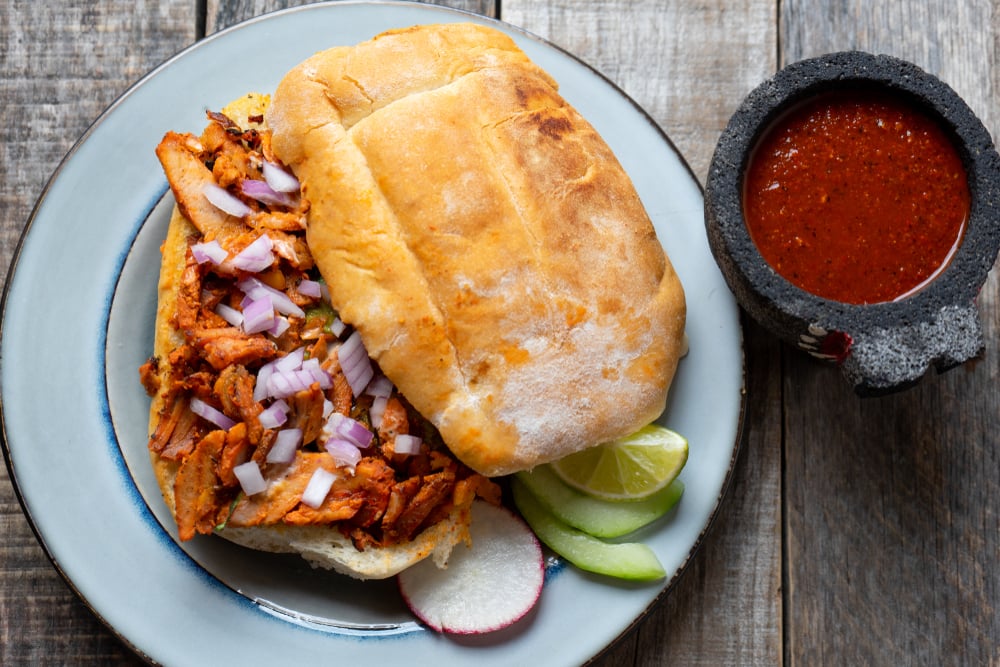When we think of delightful culinary creations from around the world, la torta often comes to mind as a vibrant and flavorful option that has captured the hearts and taste buds of many. This traditional dish, with its rich history and diverse variations, offers a unique glimpse into the cultural tapestry of its origin. From savory to sweet, la torta represents not just a meal but an experience filled with tradition and artistry.
La torta, a term that can mean different things in various cultures, particularly in Latin America, is celebrated for its versatility. It can be a sandwich, a cake, or even a pastry. Each region has its own interpretation, reflecting local ingredients, flavor profiles, and dining customs. Understanding what is la torta requires exploring its many forms and the stories behind them, making it a fascinating subject for food enthusiasts and casual eaters alike.
As we dive deeper into the world of la torta, we will uncover its origins, variations, and the cultural significance it holds in different regions. Whether you're looking to indulge in a slice of cake or savor a hearty sandwich, la torta is a dish that promises to deliver on flavor and satisfaction. Join us on this culinary journey to explore what makes la torta such a beloved dish across the globe.
What is La Torta in Different Cultures?
La torta varies significantly from one culture to another. In Mexico, for instance, it commonly refers to a type of sandwich made with a bolillo or telera roll, filled with an array of ingredients like meat, beans, avocado, and salsa. On the other hand, in Italy, "torta" translates to cake, showcasing layers of sweetness and often adorned with fruits, creams, or chocolate. This diversity illustrates how a single term can represent different culinary traditions.
What Ingredients Are Commonly Used in La Torta?
The ingredients of la torta can vary widely depending on the type and region. Here are some common ingredients:
- For Mexican Torta: Bolillo or telera bread, meats (like carnitas, chicken, or chorizo), beans, avocado, jalapeños, and various salsas.
- For Italian Torta: Flour, eggs, sugar, butter, cream, and fruits like berries or citrus.
How to Make a Traditional Mexican Torta?
Creating a delicious Mexican torta at home can be quite simple. Here’s a quick recipe to get you started:
What is La Torta's Historical Significance?
The history of la torta, particularly in Mexico, is rooted in the country’s colonial past. The introduction of bread by the Spanish led to the creation of various sandwich styles that evolved over time. La torta became a staple street food, enjoyed by all classes, symbolizing the fusion of local ingredients and culinary techniques with European influence. Its widespread popularity showcases not just its deliciousness but also its role in bringing people together.
What Variations of La Torta Exist Worldwide?
As la torta travels across borders, it has taken on many forms. Here are some notable variations:
- La Torta Española: A Spanish omelet made with eggs, potatoes, and onions.
- La Torta de Santiago: A traditional almond cake from Spain, often decorated with the cross of Saint James.
- La Torta Cubana: A Cuban sandwich packed with pork, ham, Swiss cheese, pickles, and mustard.
How Has La Torta Evolved Over Time?
Throughout the years, la torta has evolved significantly. With globalization and the fusion of culinary practices, new ingredients and preparation methods have emerged. Chefs and home cooks alike are experimenting with flavors, leading to creative interpretations of this beloved dish. Today, vegetarian and vegan variations of tortas are becoming increasingly popular, showcasing the dish's adaptability to modern dietary preferences.
Why is La Torta So Popular?
La torta's popularity can be attributed to several factors:
- Flavorful Ingredients: With its combination of fresh and savory flavors, la torta is always a crowd-pleaser.
- Versatility: Whether as a sandwich, a cake, or a pastry, la torta can be enjoyed at any time of day.
- Cultural Significance: La torta embodies the history and traditions of the regions it comes from, making it a dish rich in stories and meaning.
What Are the Best Places to Try La Torta?
If you’re eager to experience la torta firsthand, here are some popular places known for their delicious versions:
- Mexico: Street vendors and local markets often offer the most authentic tortas.
- Spain: Local bakeries serving traditional tortas and pastries.
- Cuba: Cafés and restaurants known for their Cuban sandwich variations.
How Can You Make La Torta at Home?
Making la torta at home is both fun and rewarding. With just a few ingredients and a little creativity, you can customize your torta to suit your taste. Whether you're opting for a traditional recipe or experimenting with new flavors, the possibilities are endless. Here’s a simple guideline:
In conclusion, la torta is more than just a dish; it’s a celebration of culture, creativity, and community. Understanding what is la torta opens the door to exploring the rich culinary heritage that it represents. Whether you savor it in a restaurant or whip it up in your kitchen, la torta is sure to delight and satisfy.



ncG1vNJzZmixn6PAtr7IZqWeq6RjsLC5jq2pnqaUnruofY6wn5qsXZ7AbrjAZquoqqSWe6nAzKU%3D